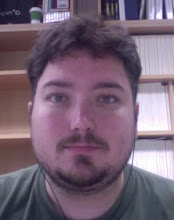For the Chapter 8 Review I spent 2 days.
I thought I was clever to use questions 1-10 from the review section as a warm up. They were a set of matching questions where you match the area formula with the shape it works for.
After that we went over questions from 8.7, that used elements from the whole chapter.
On the second review day I used another set of questions from the review section to warm up, then gave a review assignment. So half of the review was in warm-up form, and the other half was classwork. I guess that was my attempt at being tricky.
On Tuesday I gave the test. I still have to grade it and will post my general feelings about that when I have some results to share.
Wednesday, March 12, 2008
Tuesday, March 11, 2008
8.7 Surface Area
Surface area was introduced through the context of cutting up a cube, or box, and laying it out and measuring the area of each piece.
I think that this is a massive section to cover in a day or two. In this chapter we are looking at:
I think it is good to develop an intuition for looking at objects in 3-D. But rushing through this section doesn't do much to help build this intuition.
The vocabulary and 3-D intuition comes back into play in chapter 10 when looking at volumes of 3D objects.
I think that this is a massive section to cover in a day or two. In this chapter we are looking at:
- Prisms
- Pyramids
- Cones
- Cylinders
I think it is good to develop an intuition for looking at objects in 3-D. But rushing through this section doesn't do much to help build this intuition.
The vocabulary and 3-D intuition comes back into play in chapter 10 when looking at volumes of 3D objects.
Exploration: Geometric Probability II
This Exploration looks really interesting, but I didn't have time to do this with my class. I think that geometry is a great way to look at probability and I would like to try this with a class in the future.
8.6 Any Way You Slice It
This chapter looks at parts of circles.
My students found this very challenging. In this section we are looking at the area of 3 types of sections of a circle: a sector, an anulus, and a segment.

In the book they explain how to find the areas of these and I think that these were confusing to my students. As I think about this more I believe that the concept of how to find areas is more important then the formulas.
For the area of a sector a complicated formula is presented, and I think that the best way to think about this is by comparing fractions.
partial degrees / 360 = partial area / total area
This will help understand the idea of comparing proportional parts. The degrees are proportional to the area. This concept is very useful, and could be used for a wide variety of problems, I think this alone might deserve a full day in the future.
My students found this very challenging. In this section we are looking at the area of 3 types of sections of a circle: a sector, an anulus, and a segment.

In the book they explain how to find the areas of these and I think that these were confusing to my students. As I think about this more I believe that the concept of how to find areas is more important then the formulas.
For the area of a sector a complicated formula is presented, and I think that the best way to think about this is by comparing fractions.
partial degrees / 360 = partial area / total area
This will help understand the idea of comparing proportional parts. The degrees are proportional to the area. This concept is very useful, and could be used for a wide variety of problems, I think this alone might deserve a full day in the future.
8.5 Areas of Circles

The chapter looks at Areas of circles.
There is an activity which I didn't do but I would like to do if I had time. Cut a circle up into a bunch of sectors and lay them out to form a rectangular-ish shape. The rectangle will have a length of ( C / 2) and a width of r. I would like to do an activity where students cut up a circular object, like a paper plate or a pizza and find the area, then derive an area formula.
One thing I like about cutting up a circle into pieces is that it is a good way to introduce the concept of infinity, and thinking about cutting something up into infinitely many pieces to find the area.
Subscribe to:
Posts (Atom)
